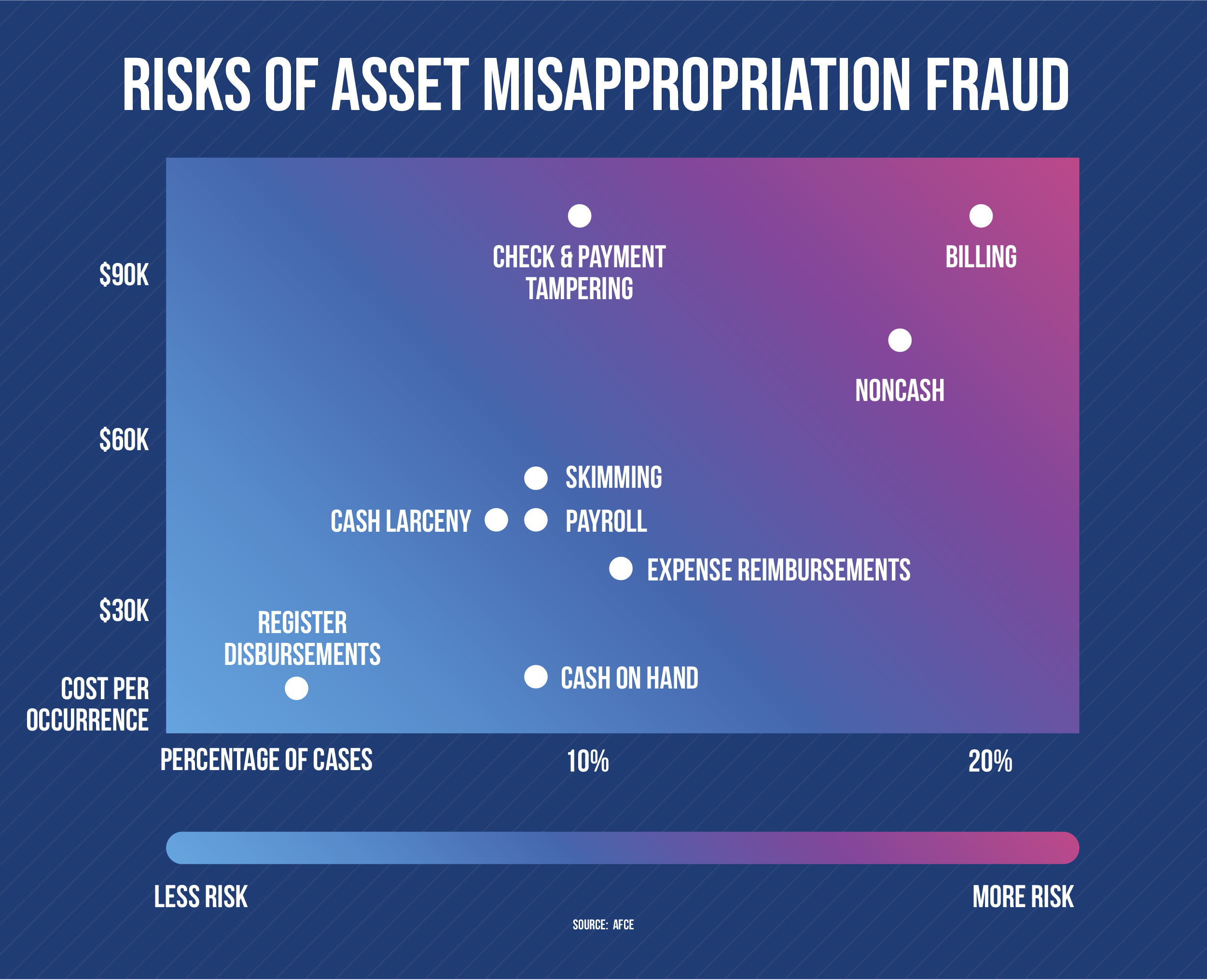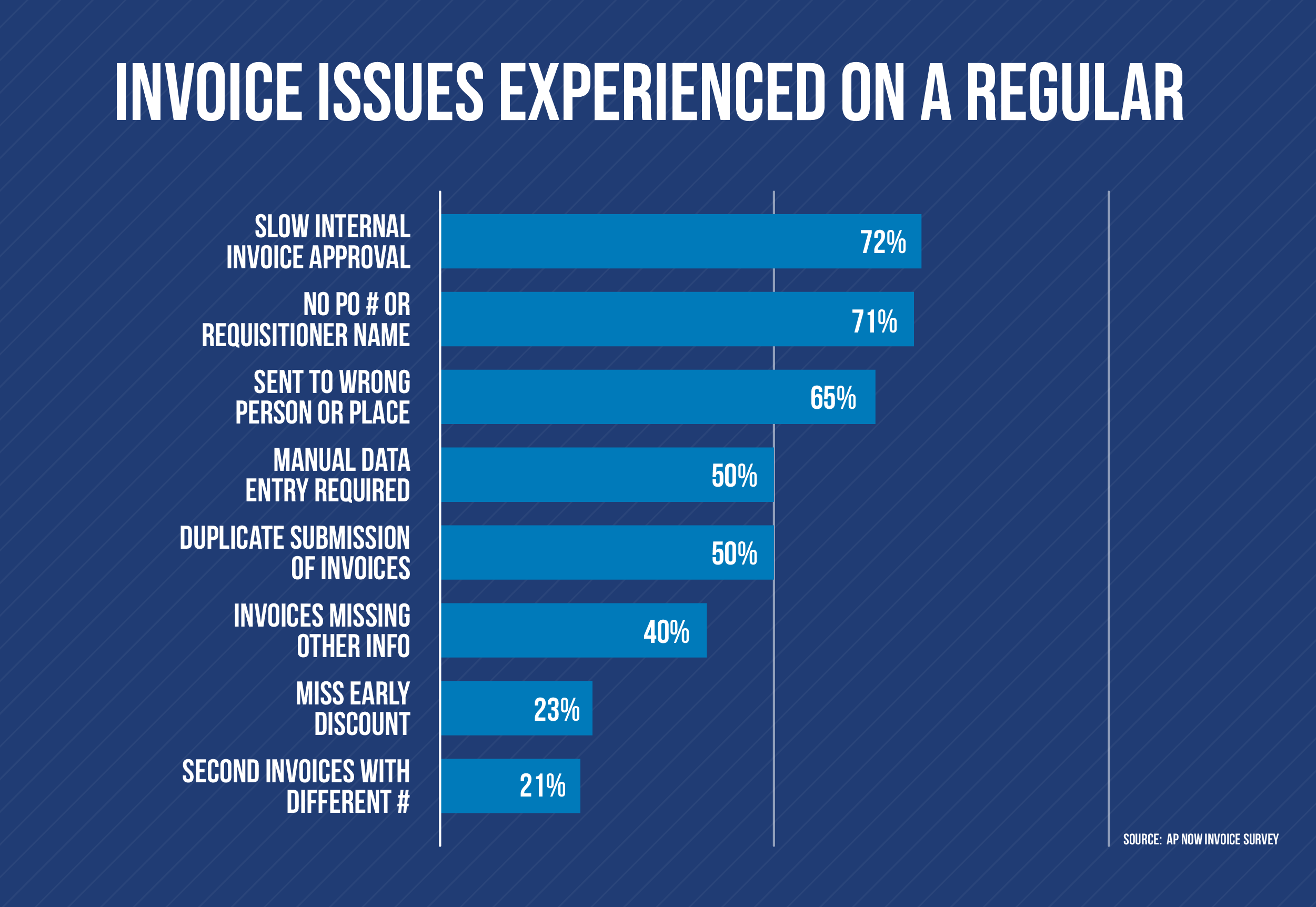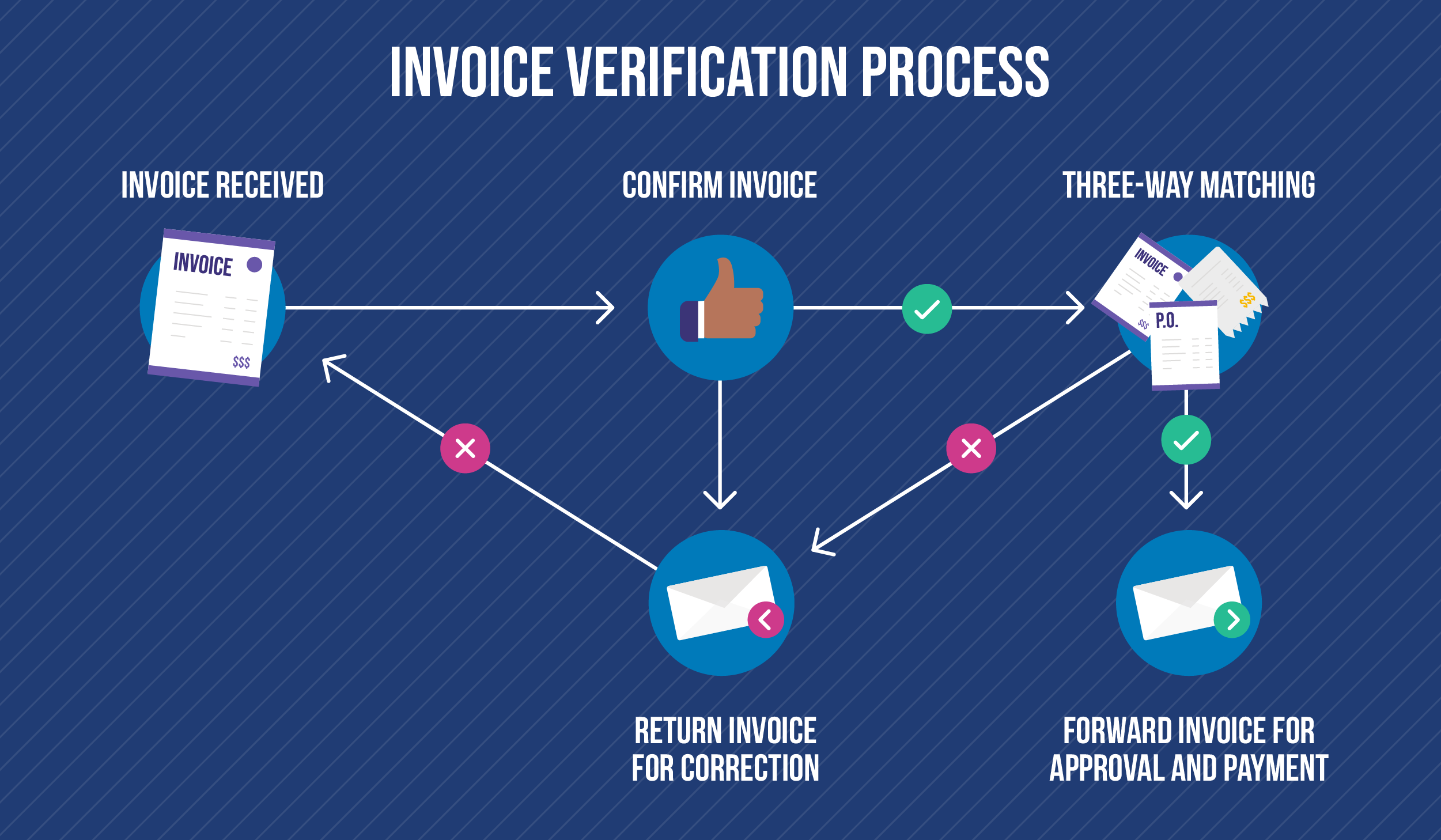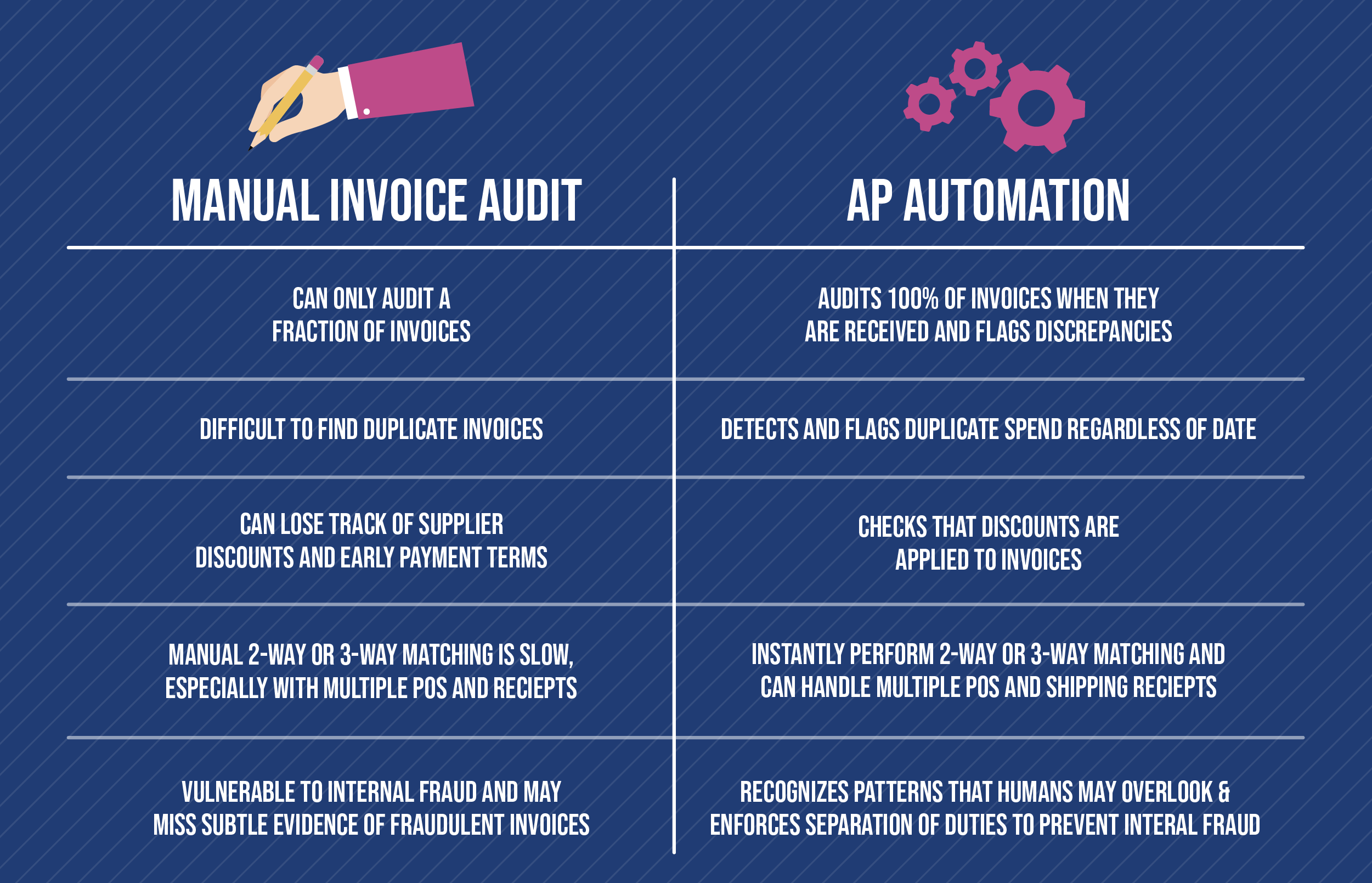Invoice Audits & AP Automation: Best Defense Against Fraud

Accounts payable is often the top priority for audits. On the surface, this isn’t a surprise – supplier expenses are usually the second biggest cost for most businesses after payroll. AP processes have a direct and significant impact on profitability and cash flow. Regular audits help companies realize cost reductions by ensuring that internal controls are in place and the AP department is performing efficiently.
Below the surface, however, the reason for auditing accounts payable is that AP departments are often vulnerable to fraud and errors. In its 2022 annual report on occupational fraud, the Association of Certified Fraud Examiners (ACFE) estimated that businesses worldwide lose 5% of their revenue to employee fraud each year. Employee fraud in the US costs businesses an average of $1.7 million per case. Over 87% of fraud cases involve asset misappropriation, and of those cases, billing fraud is by far the most prevalent and highest risk. And at the center of billing fraud is a single document – the vendor invoice.
Invoice auditing and verification is one of the most effective ways to combat billing fraud and prevent invoice errors. Through two simple processes: on-the-spot invoice verification and reconciliation of invoices against the general ledger, companies can spot the signs of fraud and take measures to mitigate the damage. Regular invoice audits also help keep a clean and complete accounts payable audit trail. A good audit trail makes it much easier for auditors to verify and validate standard operating procedures and internal controls to ensure that the business is adequately protected from fraud and errors and compliant with regulatory requirements.

Read on to learn how to audit and reconcile your company’s invoices and how automating accounts payable can reduce inefficiencies and make invoice audits more manageable and effective.
Invoice Audit Processes
Auditors identify potential fraud and errors and ensure the AP audit trail is free from material misstatements by verifying the validity of the company’s transactions. This process involves verifying invoice data to confirm the invoices are accurate and legitimate and investigating and addressing any exceptions. The primary risks for accounts payable and invoices are that payments are being made to inappropriate (fake) vendors or duplicate payments are being made. To control these risks, businesses usually follow two invoice audit processes:
- Real-time invoice verification – verifying invoice and supplier details to ensure they’re legitimate, and matching invoices against shipping receipts and purchase orders to ensure the invoice is for the actual purchase of goods and services.
- Invoice Reconciliation – confirming paid invoices by comparing them to the general ledger or bank statements. This helps detect duplicate payments and fraudulent invoices that may have passed through verification.

Besides fraud detection, invoice audits also make invoice processing more efficient, help optimize supplier contracts and payment terms, reduce overpayments, prevent late payments, ensure discounts are being received, and increase regulatory compliance. The audit process usually seeks to address the following invoice issues:
Invoice Details
Confirming the invoice is from a legitimate vendor, or if it’s from a new vendor, verifying with Procurement that the vendor and purchase are legitimate. It also includes checking the vendor name, address, phone number, logo, invoice number, and other identifying information to ensure they’re consistent with earlier invoices.
Pricing Errors
Ensuring that the pricing on the invoice is the same as the purchase order, scope of work, or supplier contract, and investigating and correcting unexpected surcharges, incorrect prices, or overcharges.
Fraud
Detecting and investigating evidence of invoice fraud, such as fake or modified invoices, invoices from unknown suppliers, and invoices that don’t match POs and shipping receipts.
Unrealized Credits, Discounts, or Rebates
Checking the invoice against accounting and the supplier contract to identify cost savings, see if any unrealized credits are outstanding, and confirm the vendor is applying the correct discounts.
Tax and VAT Adjustments
Ensuring that the correct sales or value-added tax was applied to the invoice amounts and if the invoice is in a foreign currency, confirming that the invoiced amounts match the purchase order.
Duplicate Invoices and Payments
Detecting when an invoice has been sent twice — or the same invoice has been paid twice — and investigating the cause.
Purchase Returns
Determining whether an invoice has been issued for materials that have been returned to the supplier and the proper refunds have been applied.
By checking for these issues, the auditor can verify that invoices are legitimate and accurate. The invoice audit can also include reviewing internal controls and ensuring that controls such as segregation of duties are in place to prevent fraud and errors and ensure compliance.
Invoice verification is generally performed when the invoice arrives at accounts payable, and reconciliation can be performed any time the business needs to validate its accounts payable.
Invoice Verification
Invoice verification is a series of checks to ensure that the invoice is legitimate, i.e., that it comes from an approved vendor and is for the approved purchase of goods or services. This process involves a series of checks to confirm various invoice details. The invoice is only paid if accounts payable can verify that it’s valid.

Here are the usual steps most businesses follow to manually verify and match invoices:
Confirm Supplier Information
When the invoice arrives at accounts payable, staff will confirm that the invoice is valid and has come from a valid supplier. To do this, the invoice is cross-checked against previous invoices from the same supplier. If the supplier is new, AP will confirm with purchasing that the supplier is valid.
The invoice is also checked for the supplier’s correct business name, logo, phone number, email and mailing address, account number, tax ID number, and preferred payment method. If any information is incorrect, accounts payable returns the invoice to the supplier and asks for a corrected invoice.
Check and Record Invoice Date and Due Date
Checking and recording the invoice date helps confirm that the invoice is valid, and it also makes it easier to find the invoice later during reconciliation or an AP audit. Checking the invoice date also helps avoid double payments, and it can make tax calculations easier. Making a note of the due date helps AP prioritize the invoice payment to improve cash flow, prevent incurring late payment fees, and help the business take advantage of early payment discounts.
Confirm Delivery of Goods and Services
Before sending the invoice for approval and payment, accounts payable will confirm the goods or services have been delivered and received in good order. In the case of a freight invoice audit, AP may also need to investigate any shipping costs that the shipper may have imposed.
Check Invoice Accuracy
Checking the accuracy of the invoice is the most crucial step of the invoice audit. There are three ways to check the invoice for accuracy manually:
Two-Way Matching – Comparing the details of the invoice to the shipping receipt to confirm the line items on the invoice match what was delivered.
Three-Way Matching – Comparing the invoice details to the purchase order and shipping receipt to confirm the goods and services were delivered and that the data on all three documents matches.
Checking Without Purchase Order – In cases where the business did not issue a purchase order (two-way matching), accounts payable can confirm the invoice directly with the purchasing department or shipper or against other transaction documents such as the freight bill.
If you find any discrepancies during invoice verification, reject the invoice and send it back to the supplier for correction. If there’s evidence of fraud, flag the invoice for further investigation.
Once the AP team has validated the invoice they can send it for approval and payment processing.
Invoice Reconciliation Process
The accounts payable trail is information that auditors need to verify transactions, communications, and other actions that occurred during the AP process. Every entry in the audit trail needs to include the details of what happened, when it happened, what person or system initiated the action, and supporting documentation.
The primary goal of an accounts payable audit is to search for and investigate unrecorded or underreported liabilities and suspicious transactions. The audit process usually involves inspecting supplier invoices and comparing the data to the financial records to ensure that the invoices are valid and that only the invoiced amount was paid. Invoice reconciliation can occur within an AP audit, or a company may conduct regular reconciliations of invoices to bank statements.
Auditors typically start with a sample of transactions for testing purposes. If the sample items comply with the controls in place, the auditor may use the sample results to make a judgment on the entire set of transactions. If, however, the auditor finds that items in the sample do not conform with the controls, the auditor will test more items before making a judgment.
Invoice reconciliation can involve searching and sorting thousands of invoices and making line-by-line comparisons to financial records. If the reconciliation process reveals a variance between an invoice and the bank statement, the auditor will investigate the transaction documents and records to determine the cause.
The reconciliation process effectively detects fraud and errors and identifies areas where internal controls are weak. Businesses should perform reconciliations regularly, but they are often neglected because the manual reconciliation process takes time and resources. Through process optimization and streamlining, accounts payable automation can make invoice auditing simpler, easier, and more effective.
How AP Automation Improves Invoice Auditing
Manual invoice verification and audits can be time-consuming and inefficient, especially for a business dealing with a large and growing volume of invoices. By streamlining and automating the invoice process, AP automation can significantly improve the effectiveness of invoice audits. Here’s how.
AP automation solutions like Stampli control how invoices are received and processed and allow you to audit 100% of your invoices and spending. For example, Stampli uses a specific email address where vendors send invoices. Once the invoice arrives, the platform automatically checks the invoice details and performs two-way or three-way matching. If the system notices a discrepancy, it alerts the AP team so they can investigate and resolve the issue.
Platforms with OCR invoice processing can automatically scan, enter, and code paper invoices and related documents, reducing human error and fraud. The scanned invoices can also be stored and searched digitally, making invoice reconciliation and accounts payable audits much easier.
AP automation platforms can also automatically perform invoice reconciliations whenever needed, without digging through paper files and thousands of emails. The system will automatically detect and flag any discrepancies that it finds.

Bottom line: AP automation software creates a win-win situation for internal auditors and AP teams. By centralizing invoice data, communications, and key documents, automation results in fewer invoice discrepancies, a higher rate of fraud detection and prevention, better visibility into spend, and stronger enforcement of internal controls.
By making the invoice and transaction details available and searchable, automation makes it easier for auditors to reconcile invoices against financial statements and investigate exceptions. More efficient and effective audits mean better detection and correction of control deficiencies, vulnerabilities, and errors.
Stampli: The Best Invoice Audit Solution
Stampli is the best investment to ensure that invoices and transactions are legitimate and accurate. Stampli combines powerful real-time invoice verification capabilities with audit-ready, centrally-stored invoice records, histories, payment data, and communications.
AI-Empowered Real-Time Invoice Verification
Stampli’s AI technology, Bill the Bot, streamlines and automates invoice entry, GL coding, and two-way and three-way matching for every invoice that enters the system. The platform uses machine learning to detect and identify invoice discrepancies and signs of fraud instantly, giving AP teams total visibility and control over invoice processing and verification.
Complete AP Audit Trail and 100% Invoice Reconciliation
Stampli is certified compliant with SOC 2 Type 2. The platform stores invoices along with records of associated actions, approvals, decisions, and supporting documents. Stampli centers communications directly on top of the invoice, so auditors can easily access the entire audit trail from the platform.
Seamless Integration with ERP and Accounting Systems
Stampli offers industry-leading integrations with most ERP and accounting systems, allowing you to seamlessly sync invoices, purchase orders, receipts, payment data, financial records, and other documents. By integrating with other business systems, Stampli makes invoice audits and reconciliation easier and more efficient.
Get a free demo of Stampli and make your invoice audit and reconciliation processes easier.

